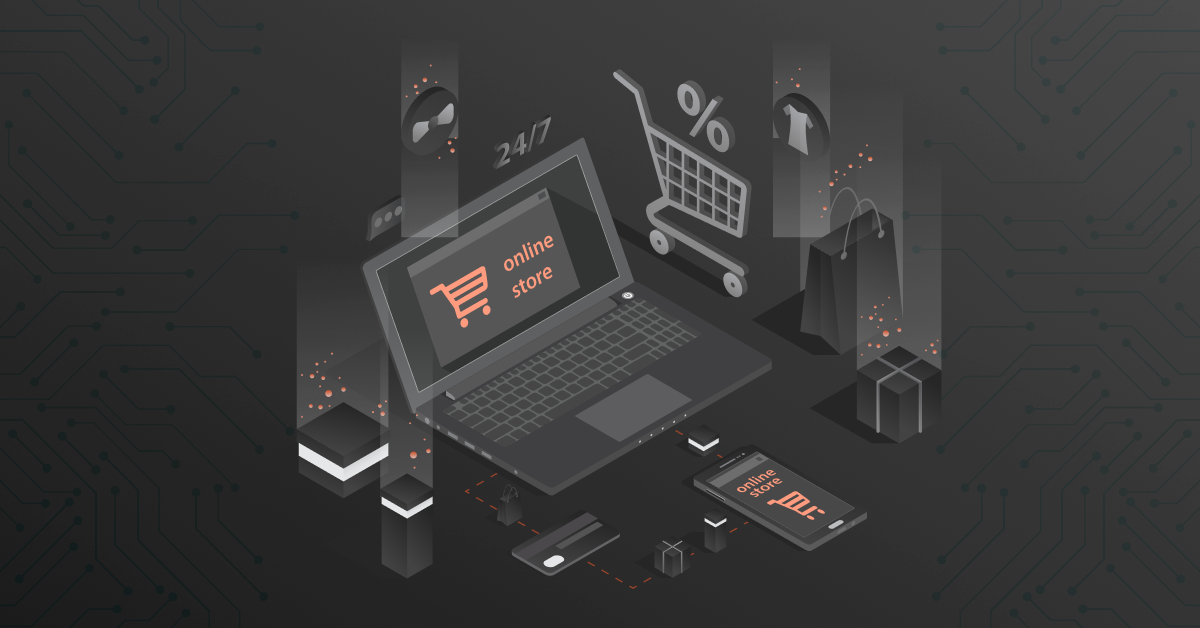So you’re thinking about starting your own eCommerce venture. You have a concept in mind, even products, business partners, and goals too. Probably even your own brick-and-mortar store that’s up and running. And you’re all ready to factor in the eCommerce website costs you will need to incur to make that happen.
Let’s make your task a little easier. Through the course of this post, we’ll cover the key costs you might incur getting started on this journey so you can plan ahead and begin your entrepreneurial eCommerce journey.
Contents
Know The Facts
Millennials are growing up. They’ve started becoming key decision-makers. And, according to one study, 59% of them will head to Amazon first when shopping online. Delivering excellent customer experiences that they are accustomed to receiving is no longer a luxury, but a necessity.
Before you begin going through your options, confirm a few key aspects regarding your eCommerce business. These decisions will play a key role in determining which options are more suited to the stage your business is in in its growth journey. This will include an understanding of your business model, your target market, and factors such as preferred mode of shipping. Your choice of platform would be dependent on several factors ranging from the skills on-hand in your team, your customer’s online buying behavior, your own business model, and, of course, your budgets.
You could join a multi-vendor platform, like Amazon or eBay. Here, you’d have the advantage of not worrying about user interfaces, acclimatizing your target audience to a new website and a wider audience. This is especially suitable for up-and-coming eCommerce businesses looking to start selling soon.
Or, you could opt for a single vendor approach: an entire platform just for your products. Think brands like Apple or Lululemon. Being specific to your business, version means more control over user experiences, less to no on-site competition, and greater flexibility for sellers. However, they do come with added costs for maintaining the site, as well as dedicated efforts to get your target audience to try a brand new shopping experience.
Should you choose this route, you would need to consider what type of platform you would be using.
Types of eCommerce Platforms
Whether you’re a brand that already has an offline business or are starting from scratch, the store is your eCommerce business’s most crucial means of interacting with customers. It acts as the store-front for your business but also functions as a marketing channel, a means to provide customer support, and many more functions. So, selecting the type of platform best suited to you and your customers is the first step towards ensuring you provide the best online shopping experience possible.
Software as a Service (SaaS)
These tools are cloud-based and, once purchased, can be accessed and used over the internet. This means that the hosting, security, and maintenance of the software itself is not placed on the business, but instead on the third-party vendor. With a SaaS solution, you won’t have to reinvent the wheel, while still having the option to use themes to customize the look and feel of your eCommerce platform to an extent, suiting your preference. This also means a faster setup and more scalability.
Popular SaaS options include BigCommerce (starting at $29.95 per month) and Shopify (starting at $29 per month). Both offer free trials.
Platform as a Service (PaaS)
PaaS offers hardware and software resources via the internet for brands to create their own applications. This brings a lot of control in the hands of the business, allowing customization for more distinctive shopping experiences. While it does require teams to have developing skills to an extent, the resources provided prevent the need to begin from scratch. At the same time, its vendor handles the hosting, security, and maintenance aspects of the platform. PaaS allow B2B websites to client obtainment frameworks as well.
Adobe Commerce Cloud, powered by Magento offers PaaS services. Being an enterprise offering, the exact price is available on request. A free trial is available.
Open-Source
True to their name, these provide the brand with complete access to the source code. These can be customized to a large extent by the brand, provided they have the resources to do so. This extent of ownership also means that the brand is responsible for its security, maintenance as well as additional tools (which may otherwise be offered with the SaaS solution). Fortunately, these platforms also have communities of developers who are very willing to share (and gain) knowledge and ideas.
While there are free open-source eCommerce tools such as WooCommerce and OpenCart, commercial options are available in the market as well.
Headless eCommerce
This form of eCommerce platform involves the front-end being decoupled from the back-end, i.e., the elements that are showcased to the audience is separated from the back-end that handles the functionality of the site. This allows for more flexibility, customizations, and the deployment of new-age rich content without impacting the smooth functioning of the back-end. These platforms thus lend themselves well to omnichannel eCommerce. It is ideal for companies that have the talent and resources to manage multiple tech stacks, site maintenance and bear the initial costs of setting up.
Shopify Plus (starting at $ 2,000 per month) and BigCommerce offer headless eCommerce solutions. Commerce Layer is another, which offers a free developer account, and plans to start at $900 per month thereafter.
Additional eCommerce Website Costs
Choosing your platform is key, but isn’t the only major expense you’d be likely to incur while setting up your eCommerce business. Depending on the kind of website you are looking to establish, there are several other aspects that come into play during setup and maintenance. Here are some of the additional expenditures you may incur:
Domain and web hosting
You would need to purchase your own brand domain. The domain will be a direct reflection of your brand, so you’d want to choose a unique but simple one. Web hosting is where all your files – your codes, images, content, etc. – are stored on a web server, allowing access to them via the internet.
SSL certification
Security concerns have long since been the leading reason behind a hesitancy towards choosing to purchase online. Assuring the security of your visitors and their data is a must, meaning that merchant websites must be SSL (Secure Sockets Layer) certified. Incomplete security measures may even cause browsers to limit access to your site.
Payment gateway
One significant aspect of your eCommerce website would be the payment methods that are supported by your website. The payment stage is a crucial part of the customer journey and a common stage to abandon cart: meaning the payment process has to be as seamless and simple as possible to ensure they go through with the payment process. We’ve covered all that you need to know about payment gateways here.
Packaging
Your packaging may just be your client’s In Real Life interaction with your brand. Safe to say, the impression it leaves matters. Functionally, the packaging also has the task of ensuring that your product remains in its best condition upon arrival. Your choice of packaging should thus meet these expectations while also fitting in your budget.
Shipping
The time starts ticking as soon as the order has been placed. The sooner your customer can receive their purchase the better, but on the brand’s end, there are several facets to finalize. Your shipping strategy plays the role of navigating both these sides, and the right one can help craft a win-win situation. This will also include decisions regarding pricing your shipping, the geographic extent you’re willing to ship to, and the means of doing so: each involving cost considerations to take into account.
Marketing
Let’s face it. Most brands are not Tesla, and investing in some form of marketing is crucial to getting your target audience to even know about your brand. While some marketing tasks can be done by your team in their free time, it definitely is a full-time function that needs specific attention paid to it. Whether having dedicated resources internally fits your bills or you find outsourcing to freelancers or an agency to be more up to your speed, factoring the expenditure on skills and promotional activities is important.
Conclusion
It’s an exciting time to be venturing into eCommerce. It has plenty of opportunities for all kinds of brands looking to make their entrance into the market, and as many solutions: now it’s only a matter of finding the ones that fit your vision and resources best.




